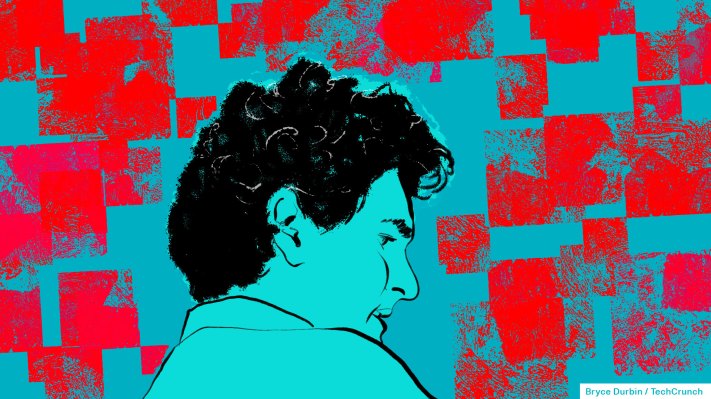It’s the fifth week of Sam Bankman-Fried’s trial for seven charges of fraud and money laundering during to his time as the CEO of former crypto exchange FTX. He’s been on the stand since Thursday to testify, and there was a tangible shift of tone Monday when prosecutors took over for cross examination.
On Friday and for part of Monday morning, Bankman-Fried, dressed in another oversized gray suit, answered questions from his main defense lawyer, Mark Cohen. The courtroom benches for the public were full.
At the end of the defense’s examination, Cohen asked Bankman-Fried why he spoke out in public shortly after he stepped down as CEO and FTX filed for bankruptcy. “I felt like it was the right thing to do to talk about what happened,” he said. “I had my memory . . . [but] very little beyond that,” he said, referring to him being cut off from access to FTX’s internal documents after his departure.
“I wanted to apologize for what happened and explain this as best I can at the time,” he said. After FTX collapsed, Bankman-Fried went on “Good Morning America” and other outlets, as well as Twitter Spaces with internet personalities like Mario Nawfal.
Once assistant U.S. attorney for the SDNY Danielle Sassoon began to cross-examine Bankman-Fried in front of a jury, he was quick to reply, but only repeated a handful of uncertain expressions, like “I don’t recall,” “I may have,” “Sounds plausible,” “I’m not sure,” “Possibly,” and “Sounds right.” He waffled so many times that the overflow room, filled with public spectators and other reporters, echoed with laughter.
Sassoon appeared to be trying to portray the former CEO as a serial liar, using his highly public past interviews before his arrest in mid-December as ammunition.
She questioned him about his involvement in Alameda Research, the sister trading company of FTX, of which he owned 90%. When asked whether he was involved in Alameda’s trading strategies, he sarcastically replied, “Depends how you define trading.” This comes after Bankman-Fried took the stand without jurors on Thursday so Judge Lewis Kaplan could determine what the ex-FTX CEO could say when he took the stand on Monday.
Bankman-Fried also said he was not “generally” making trading decisions at Alameda, but was not “walled off,” either. After Bankman-Fried repeatedly said he did not recall telling Caroline Ellison, the former CEO of Alameda, to make various trades, Sassoon pulled up government evidence that showed he did.
The prosecution also brought up a number of Bankman-Fried’s statements, videos and interviews, both before and after he stepped down as CEO of FTX, where he said he was “not involved at all in the trading” of Alameda and hasn’t been for years since it was a “conflict.”
The prosecution also said there was metadata that proved Bankman-Fried had access to Alameda’s balance sheets in 2022, implying that he was deeply involved in the crypto trading firm even though he was not its “CEO” at the time (he stepped down in 2021).
Throughout the prosecution’s cross-examination, Kaplan seemed to be getting frustrated; he had to remind Bankman-Fried to answer the question instead of replying with different answers.
Referring to the public narrative Bankman-Fried had painted in the past, Sassoon asked if he knew how to tell a good story, to which the ex-FTX CEO replied, “I don’t know, depends what metric you use.”
Sassoon then brought up how Bankman-Fried would tell a story to get investors to invest in his company over and over, bringing in billions of dollars in capital for FTX. She also highlighted how FTX was promoted as “safe” and “the most trusted” crypto exchange in its advertisements. Bankman-Fried didn’t confirm that he called FTX safe. “I can’t think of a specific [statement] off the top of my head,” he said in response.
Sassoon also shared a private conversation that Bankman-Fried had, in which he called some customers “dumb motherfuckers.” Bankman-Fried said that comment only referred to a “specific subset” of FTX customers, not all of them.
‘I don’t recall’
The rest of Monday afternoon was filled the prosecution asking Bankman-Fried a question, and him demurring. For example, when Sassoon asked if Bankman-Fried had access to FTX’s AWS database, he said, “to my knowledge, I didn’t” then added, “I never used it.”
Shortly after, the prosecution pulled up evidence: metadata showing he asked for access to the database after the company’s bankruptcy. They asked again if he tried to get access after the bankruptcy, to which he testified, “yes,” changing his stance.
The government also pulled up the alternative balance sheets that Ellison created and testified about. Sassoon asked Bankman-Fried whether he’d seen it. “I don’t have a recollection of seeing it, no,” he replied. Once again, the prosecution pointed to metadata showing that he viewed the spreadsheet at the time it was created. “I know, in my view, there’s metadata that suggested I viewed it,” Bankman-Fried said.
The prosecution also brought up Alameda’s $65 billion line of credit. When asked whether Bankman-Fried knew that Alameda could borrow from FTX without posting collateral, he said “that was not my understanding” and added “I’m not sure I understood that then.”
Correction: This story was updated to reflect that Bankman-Fried took the stand without jurors on Thursday, not Friday.
This story was updated at 1:55 p.m. to include testimony from later in the day.
